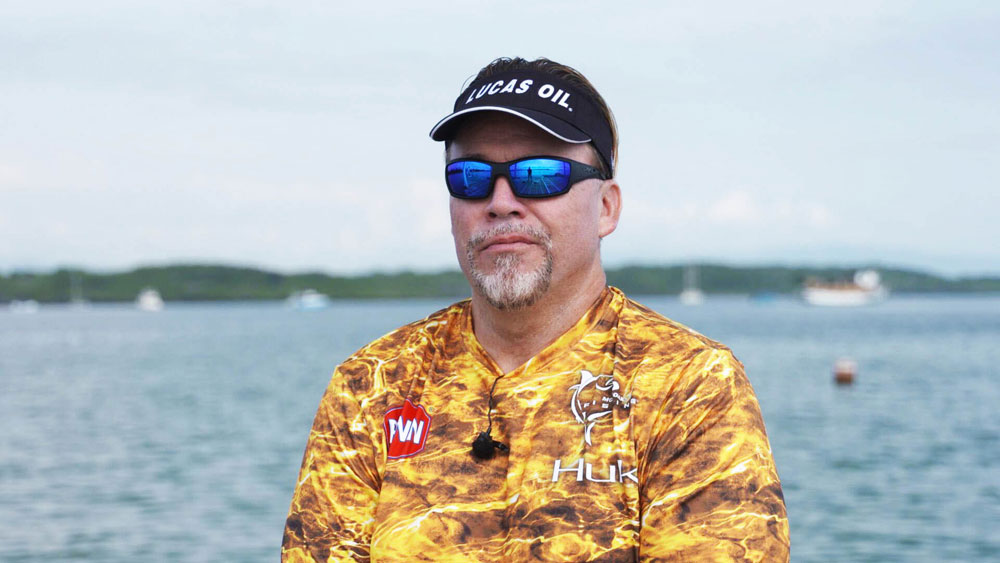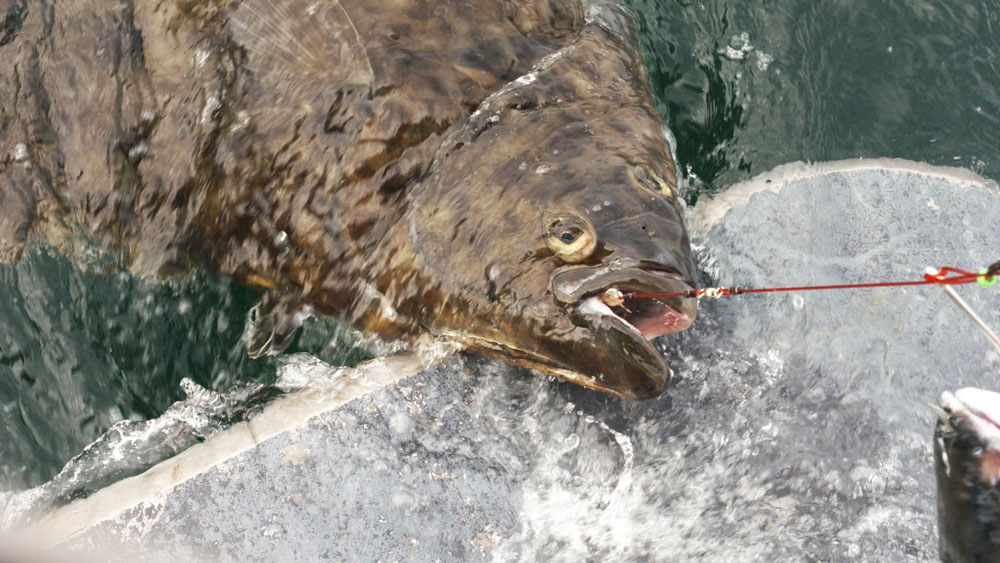Mark Davis from Lexington, South Carolina, uses his Pure Bay boat to fish from Montauk, New York, to Brownsville, Texas, for all saltwater species. Each year Davis films seven shows in the U.S. and six shows from destinations all over the world for his TV show, “BigWater Adventures” on the Outdoor Channel. Davis has been on the Outdoor Channel for 11 years, and he's filming for year 12 right now.

I've been hunting most of my life, and my fishing show helps pay for my hunting trips. It’s always been a short walk from the campfire to the dock for me. When I hunt, I always wear Mossy Oak. At the ICAST (International Convention of Allied Sportfishing Trades) show in 2017, Tommy T from Mossy Oak saw me in the Penn booth and asked me to look at Mossy Oak’s new Elements patterns.
I took one look at the Elements patterns and said, “I want to be involved with this. The patterns are awesome.”
Since I started BigWater Adventures, I’ve always worn a yellow shirt. When I saw the Yellowfin Elements pattern, I told the Mossy Oak folks, “This is a good pattern for me, because my lifestyle is on the water and in the woods.”
I usually start putting my schedule together for the upcoming spring and summer in September and October. One of the problems we have, especially if we’re fishing for pelagic species, is that I've got to try and time when the fish like white marlin, blue marlin and wahoo will show up at a certain destination. If fish like this don’t show up where and when they're supposed to, we can’t catch them, obviously.
One of the problems with fishing for tuna, billfish, cobia and many other species of fish is they don’t know on what date or where they're supposed to show up. For this reason, when I’ve planned a trip and set up a schedule to catch a certain species of fish, if the fish aren’t where they're supposed to be on that date, we may have to cancel the trip or fish for a species we hadn’t planned to catch. This happens all the time.
For instance, two weeks ago we went to Costa Rica. I had a list of 10-different species of fish that I thought we might catch. We had planned to fish for cubera snapper and roosterfish. But when we got to our Costa Rica destination and went offshore, the sailfish and the blue marlin were there. So, that’s what we fished for and caught. Last year this same week, the blue marlin were in, but the sailfish weren’t. The same week the year before that, there were no blue marlin and no sailfish when we arrived in Costa Rica.
If you had to pin me down as to one trip that was the toughest, it would have to be a trip we took to Alaska. When I'm asked, “When’s the best time to fish Alaska,” my answer is once the weather lets you go fishing, and you never know when the weather will allow you to fish.
I like to fish with the outfitter I use in Alaska, because they have fishing operations from Seward, Alaska, to Homer, Alaska. So, when we arrive in Alaska, we have different options to be able to get out and fish, depending on the wind and weather conditions.
For the last eight or nine years, I'd planned a trip to Middleton Island, Alaska, about 173 miles south of Anchorage. From what we had heard, Middleton Island was a very small island where everyone wanted to fish. We do a lot of underwater photography in our show, and we wanted to get underwater pictures of halibut and lingcod actually taking our baits. To get those videos, we had to put our cameras down in water 150 feet. For nine years, every time we tried to go to Middleton Island, we’d have to cancel the trips because of the weather. We were fishing in 32-foot boats. We had to have weather conditions that would let us travel 122 miles, spend a day or two videoing our show and then come back that same 122 miles.
If you look for Middleton Island on Google Earth, you won’t find it because it’s a military installation that was set up to be an early warning for an attack by the Soviet Union. Middleton Island is only about 3-1/2-miles long by 1/2-mile wide. It has mounds of dirt about 50-feet high, and you can’t see over those huge piles of dirt and grass. We stayed out and fished around Middleton Island for 32 hours, and every plane that flew onto or off the island tipped its wings at us. Middleton Island isn’t too far from Russia.
I’d built a deep-diving camera housing with two cameras shooting at 45-degree angles. Halibut look like a giant flounder, and everyone has always thought they live and feed on the bottom. But with our video cameras, we learned that the halibut is a mid-water apex predator. This fish could stay on the bottom but also chased herring. We also learned that lingcod were bottom feeders, but the halibut would come up off the bottom to take baits. When you're catching halibut, oftentimes, you'll catch them on the sides of their heads. Most people believe that the halibut are taking a bite out of the jig. Then when you set the hook, you’re catching them on the sides of their faces.

We had a piece of salmon on the tips of each of our halibut jigs. From the video, we learned that when the halibut saw the baits, they started coming to them, but instead of eating the baits, they pushed the jigs with their noses, about 6-8 feet off the bottom. When a halibut pushes the 1-pound jig around, the fish smells the jig with its nose to try and determine if it’s something it wants to eat.
I guess the reason this was the toughest show I ever had to make was because we tried to get that show for nine years. Also, since this destination was so far from port, we knew if we made a mistake, and the weather turned bad, our only option would be to call the Coast Guard to come get us. Plus, our boat would have a good chance of sinking. But I love what I do.






























